| Japanese Armor:
Japanese Armor
By Mike Bennighof, Ph.D.
January 2022
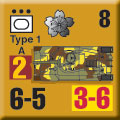 To hold Saipan against the anticipated American assault, the Japanese tried a slightly different approach, assigning a relatively large contingent of tanks to the defense. The armor would be held in reserve, and launched in a massed counterattack at a key moment, preferably at night, against the invaders. To hold Saipan against the anticipated American assault, the Japanese tried a slightly different approach, assigning a relatively large contingent of tanks to the defense. The armor would be held in reserve, and launched in a massed counterattack at a key moment, preferably at night, against the invaders.
Toward that end, the 9th Tank Regiment moved to Saipan with about 48 tanks (sources differ as to the exact number, apparently due to confusion over how many were sunk along with their transports while on the way to the islands). Most of them were Type 97 Chi-Ha medium tanks with some Type 95 light tanks and a handful of Type 97 Shinhoto “Improved Turret” Chi-Ha medium tanks. One company was thrown away in a small attack on the Fourth Marine Division on the invasion’s first day. But the rest of the regiment, along with supporting infantry, made a concentrated attack on the Second Marine Division in the early hours of the following day.
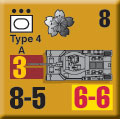 Things went badly from the start, as the Americans had spotted the buildup during the day and heard the engine noises and clanking treads well before the tanks appeared. The Second Marine Tank Battalion had moved up to support the riflemen, and between them the Shermans, anti-tank guns and Marine bazooka teams claimed two dozen tanks; another 12 Japanese tanks managed to retreat. Things went badly from the start, as the Americans had spotted the buildup during the day and heard the engine noises and clanking treads well before the tanks appeared. The Second Marine Tank Battalion had moved up to support the riflemen, and between them the Shermans, anti-tank guns and Marine bazooka teams claimed two dozen tanks; another 12 Japanese tanks managed to retreat.
“Star shells were lighting up our tanks and American gun and bazooka fire were destroying them,” recalled Sgt. Shiro Shimoda of the 9th Tank Regiment. “American M4 Sherman tanks suddenly appeared and we opened fire on them, but our shells bounced off them like baseballs owing to their thick armor.”
Japanese tanks like the Type 97 had little chance in battle against the M4 Sherman: with thin armor, a fairly slow speed and a short-barreled 57mm gun designed to fire high-explosive rounds as infantry support, they were barely adequate against Chinese forces with no anti-tank guns. Against the Marines with their U.S. Army hand-me-downs, they were little more than rattling targets.
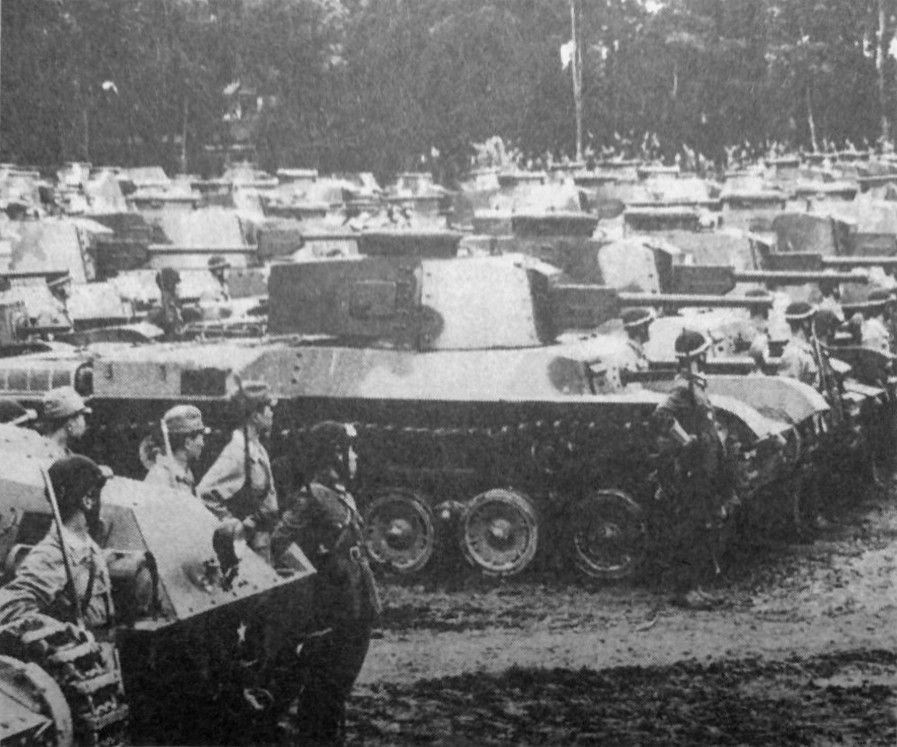
The Type 1 Che-He
medium tank.
The Japanese were well aware of the Sherman’s battlefield prowess, and struggled to build a new tank capable of defeating it, or at least standing up to it in battle. The Shinhoto version of the Chi-Ha tank put a high-velocity 47mm gun in a new turret on the old Type 97 chassis, and this stopgap remained in production until 1943.
Though design work wrapped up in 1941, the very similar Type 1 Che-He did not replace the Type 97 in production until 1943. The same turret and main gun now sat atop a better-designed main body, with somewhat more armor protection and a much more powerful engine to allow for more speed. In 1941 the Che-He might have made for an almost-adequate medium tank; by 1944 it was hopelessly outclassed. A few saw action on Luzon in the Philippines, but none on Saipan.
The Japanese apparently knew nothing about the Sherman when the Type 1 was designed, but once they received reports of it they began to design a counter to it. Design work on the Type 3 Chi-Nu began in May 1943, with completion in October of that year and production under way soon afterwards. The Type 3 initially had a 75mm gun derived from a French field piece, mounted in a large hexagonal turret atop a modified Type 1 chassis.
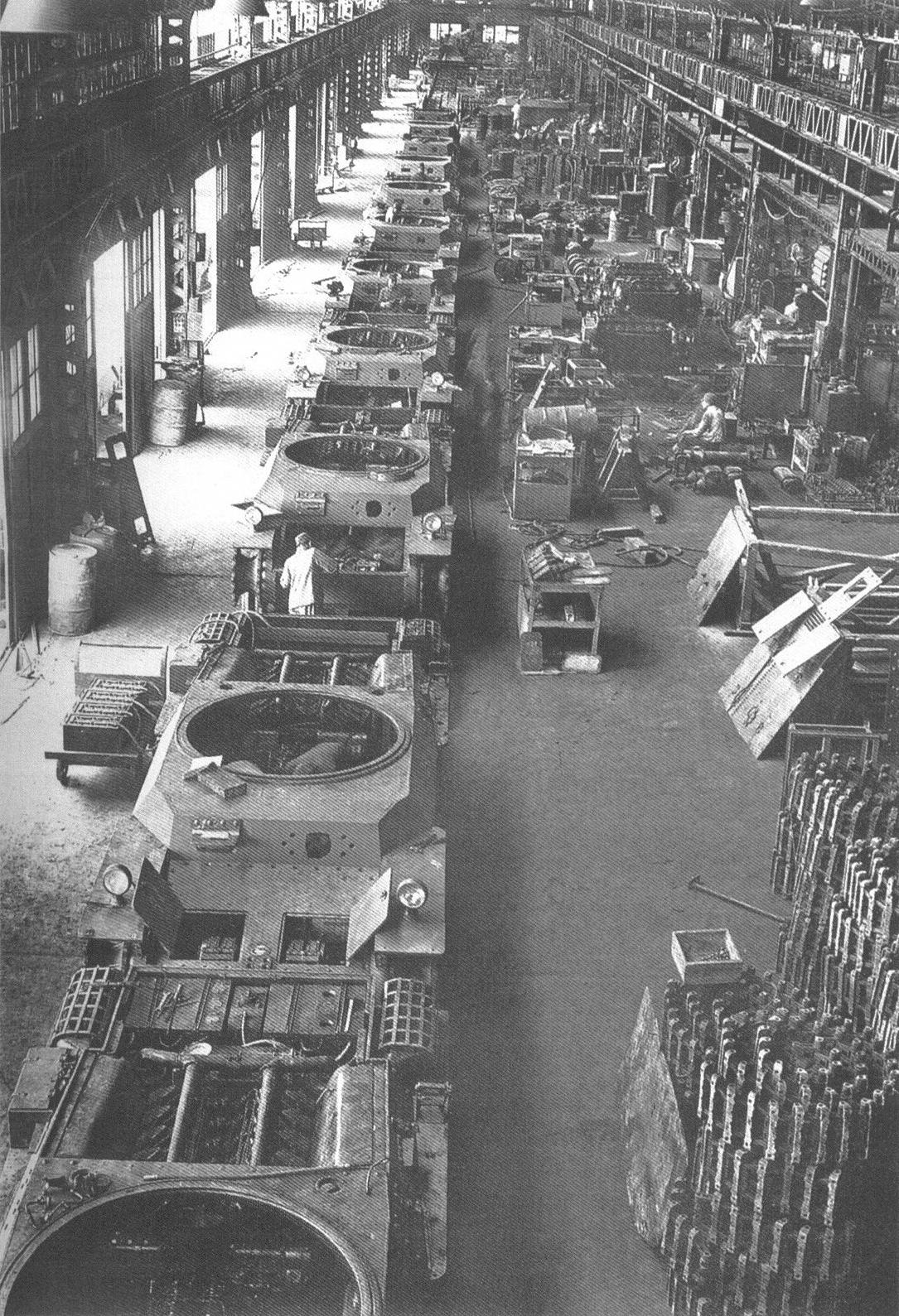
Assembling the Type 3 Chi-Nu medium tank.
The Japanese designers followed the same philosophy as that of the Sherman’s American design team regarding the main gun. High-velocity guns wear out quickly, and both sets of designers went by artillery standards, choosing a lower-velocity weapon to preserve its service life. Few if any Shermans survived in combat long enough for barrel wear to become a problem, and the Chi-Nu would have been unlikely to last any longer.
Mitsubishi managed to build about 160 Chi-Nu during 1944 and 1945, struggling with steel shortages and American bombing raids. They saw no action during the war, remaining in the home islands with the newly-raised 4th Armored Division. But at least some production models were ready in time for the fighting on Saipan, and could have met the Shermans in battle there.
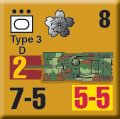 The Chi-Nu had been a stopgap program, thanks to delays with the Imperial Army’s true challenger to the Sherman, the Type 4. The Type 4 once again took its hull and chassis from the basic design of the Type 97, though greatly enlarged and featuring all-welded construction. For its main armament the Chi-Nu carried a new high-velocity 75mm gun derived from an anti-aircraft gun, and it had relatively good armor protection (as Japanese tank armor went). The Chi-Nu had been a stopgap program, thanks to delays with the Imperial Army’s true challenger to the Sherman, the Type 4. The Type 4 once again took its hull and chassis from the basic design of the Type 97, though greatly enlarged and featuring all-welded construction. For its main armament the Chi-Nu carried a new high-velocity 75mm gun derived from an anti-aircraft gun, and it had relatively good armor protection (as Japanese tank armor went).
Once the engineering was complete, production lagged thanks to the same problems encountered in the Type 3 program: material shortages and American bombing. Only a handful of tanks had been completed when the war ended, and none saw combat. Had Mitsubishi met the Imperial Army’s deadlines the tank would have been ready in time for the Battle of Saipan, however.
How much difference would higher-quality armor have made to the Japanese defense of Saipan? While the Japanese lacked much combined-arms technique, their tank attack did surprisingly well, with many vehicles penetrating the Marine lines before being shot to pieces. With more-resistant tanks, bearing heavier weaponry, they could have done a great deal more damage. But they were unlikely to hurl the Marines back into the sea: even with a successful attack, American air power would have relentlessly hunted down the remaining Japanese tanks. They could have inflicted delay, but they were not going to sweep the island clean in a samurai blitzkrieg.
Don’t wait to put Japanese Armor on your game table! Join the Gold Club and find out how to get it!
Sign up for our newsletter right here. Your info will never be sold or transferred; we'll just use it to update you on new games and new offers.
Mike Bennighof is president of Avalanche Press and holds a doctorate in history from Emory University. A Fulbright Scholar and NASA Journalist in Space finalist, he has published an unknowable number of books, games and articles on historical subjects.
He lives in Birmingham, Alabama with his wife, three children and his dog, Leopold.
Want to keep Daily Content free of third-party ads? You can send us some love (and cash) through this link right here.
|
